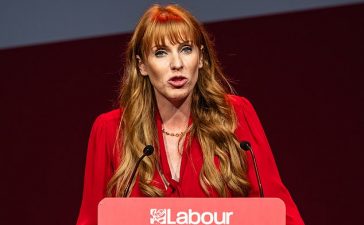ExchangeRates.org.uk – At the time of writing, was trading at around $1.2755, down around 0.3% on the week but up from it’s one-month low of $1.2672. The Pound (GBP) plunged last week as markets began pricing in the possibility of two more from the Bank of England before the end of the year. The uptick in rate cut bets came following the BoE’s policy decision the previous week, where it cut rates for the first time since 2020, and widespread panic in global markets. Amid fears of a US recession, rumours that the Federal Reserve would enact an emergency rate cut swirled. Investors saw this as increasing the likelihood that the BoE would embark on a faster pace of policy unwinding this year. GBP was also undermined by the recent riots spreading across the UK. A week of violent civil unrest in multiple cities across England and Northern Ireland shattered the narrative that the UK had returned to political stability following the Labour Party’s election victory last month. The increasingly risk-sensitive Pound was able to recoup some of its losses at the very end of the week, thanks to an improving market mood and an end to the rioting.
US Dollar (USD) Volatile amid Global Market Panic
Meanwhile, the US Dollar (USD) faced considerable volatility last week as the rout in global markets saw USD tumble before bouncing back and then fluctuating through much of the week. On the one hand, rumours of an emergency Fed rate cut and fears of a US recession weighed heavily on the US dollar. On the other, the significant risk aversion sweeping markets provided the safe-haven ‘Greenback’ with support. As markets stabilised, this mixed movement continued – returning risk appetite undermined USD while fading Fed rate cut bets supported it. A fall in US jobless claims then helped to further ease fears of a recession, which boosted USD against some of its weaker counterparts. Overall, while USD faced losses against some rivals and wavered elsewhere, it was able to rise against the beleaguered Pound.
GBP/USD Exchange Rate Forecast: Big Week of Data to Bring More Heightened Volatility?
We could see more significant volatility over the coming days amid high-impact data from the UK and the US. Tuesday brings the latest UK labour market report for the three months to June. is expected to tick up to 4.5%, its highest level since August 2021, while wage growth is set to cool sharply. These signs of a slowing labour market could fuel BoE rate cut bets and hammer the Pound. However, the UK’s on Wednesday is forecast to show that inflation accelerated in July for the first time since December, rising from 2% to an expected 2.3%. This could dent BoE rate cut bets and boost the Pound. On Thursday, the UK’s reading is expected to show that the economy grew by 0.5%. This is a slowdown from Q1’s surprisingly strong 0.7% growth, but could still lend GBP some support. Finally, Friday sees the UK’s July retail sales figures published. Could a recovery in domestic sales growth lift the Pound? Across the Atlantic, the focus is on the US CPI figures on Wednesday. With both headline and core inflation forecast to cool, the ‘Greenback’ could slide. An expected uptick in US retail sales on Thursday could aid USD, although the upside may be limited.
This content was originally published on ExchangeRates.org.uk












